Now we live in a time when medicine can cure most dangerous diseases. Sometimes, not the most gentle methods are used (especially in the case of oncology), but if we compare with those methods of treatment that were practiced in the past, then we can say that modern patients are very, very lucky!
Here are the top 10 most deadly and inhuman treatments in history.
10. Radioactive water for arthritis and cancer
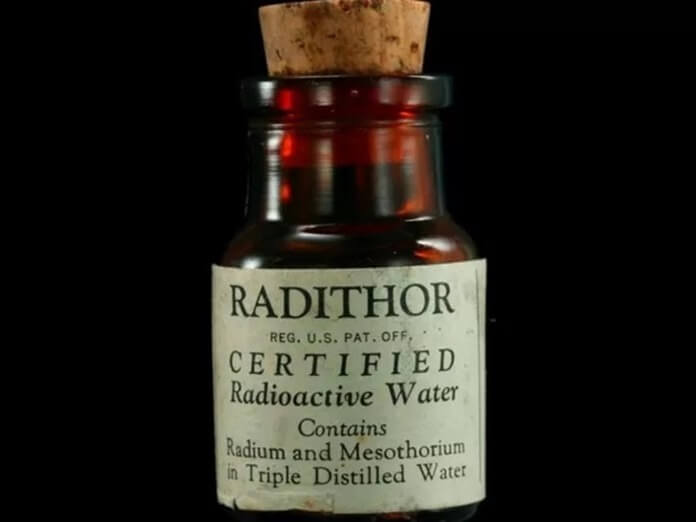 Nowadays, any bad student knows that uncontrolled radiation is very harmful to health and should be avoided at all costs. However, when the world learned about radiation, an unspoken equal sign was immediately drawn between it and the word "miracle" and they tried to adapt it, including for medical purposes.
Nowadays, any bad student knows that uncontrolled radiation is very harmful to health and should be avoided at all costs. However, when the world learned about radiation, an unspoken equal sign was immediately drawn between it and the word "miracle" and they tried to adapt it, including for medical purposes.
For example, in the period from 1918 to 1928 on the shelves of American pharmacies, you could buy a product called "Radithor". It contained distilled water as well as radium-226 and radium-228. This explosive mixture has been proposed as a cure for mental disorders, arthritis, impotence, and stomach cancer.
The famous golfer and industrialist Eben Byers actively used radioactive water on the advice of his doctor. Before his death, he managed to drain 1,400 bottles, three times the lethal dose for humans. He was a healthy man, what can I say.
However, the jokes are bad with radiation, it gradually stripped Byers of all teeth, part of the jawbone, and softened the skull so that it slightly sagged under the fingers. Two years after starting Radithor use, Byers passed away. However, his death served a good cause - the authorities of the United States, and then Europe, paid close attention to radioactive drugs, and finally banned them in 1935.
9. Lobotomy for mental disorders
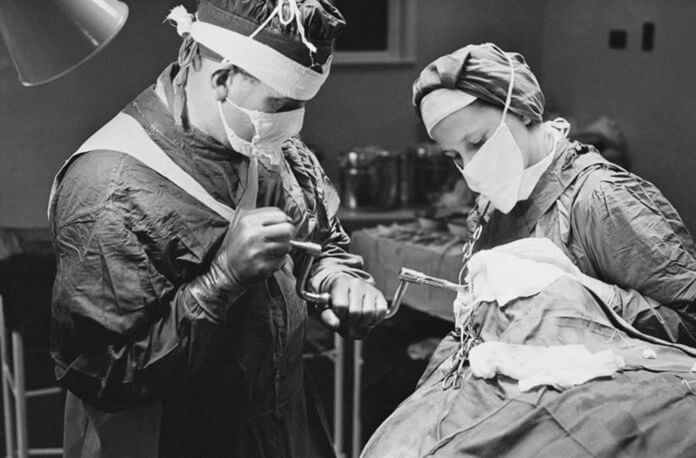 This cruel procedure, developed by Dr. Antonio Egas Moniz, was positioned as a means of salvation in hopeless situations, with various mental illnesses. Lobotomy involves the excision or severing of one of the lobes of the brain.
This cruel procedure, developed by Dr. Antonio Egas Moniz, was positioned as a means of salvation in hopeless situations, with various mental illnesses. Lobotomy involves the excision or severing of one of the lobes of the brain.
Unfortunately, those who survived the lobotomy turned into weak-willed and passive living "vegetables" who were not capable of independent decision-making. Therefore, they could not live normally in society.
One of the most notorious victims of a lobotomy was Rosemary Kennedy, sister of 35th President John F. Kennedy. After the operation, she mentally remained at the level of a two-year-old, and spent the rest of her life in need of constant care.
8. Electric therapy for impotence and migraine
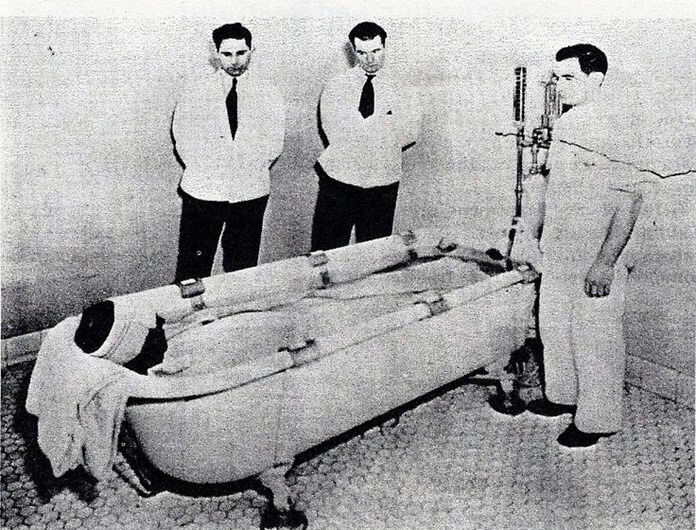 During the harsh Victorian times, the treatment for erectile dysfunction was harsh.
During the harsh Victorian times, the treatment for erectile dysfunction was harsh.
Some doctors practiced "galvanic baths", or baths with electrodes, which shocked the patient and thus had to restore his extinguished sexual desire in just six sessions. The same treatment was said to have helped with chronic migraines.
Other Victorian doctors practiced an even more savage method: the rod through which the current passed was placed directly into the patient's urethra. The treatment lasted for 5-8 minutes and was repeated once or twice a week. Fortunately, now there are many good means for male potency.
7. Heroin for colds
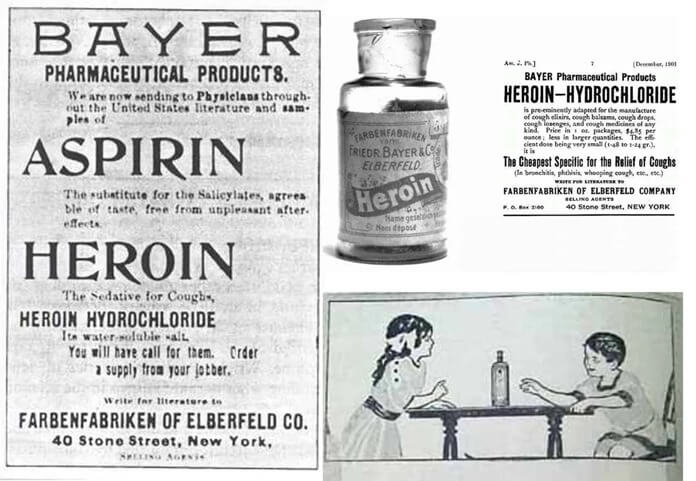 This drug is now associated with crime, poverty and disease. But there was a time when heroin was considered a medicine, and it was prescribed for a number of diseases. In the early 20th century, heroin was used in the United States and Europe to treat colds, coughs, and as a pain reliever. There was even a children's version of heroin medicine.
This drug is now associated with crime, poverty and disease. But there was a time when heroin was considered a medicine, and it was prescribed for a number of diseases. In the early 20th century, heroin was used in the United States and Europe to treat colds, coughs, and as a pain reliever. There was even a children's version of heroin medicine.
In the Russian Empire, heroin was used in the 1900s to treat depression, at the initiative of Dr. A. N. Bernstein.
However, the reassessment of the harm and benefits of heroin has led to the fact that it has gradually ceased to be used for medical purposes.
6. Gasoline from lice
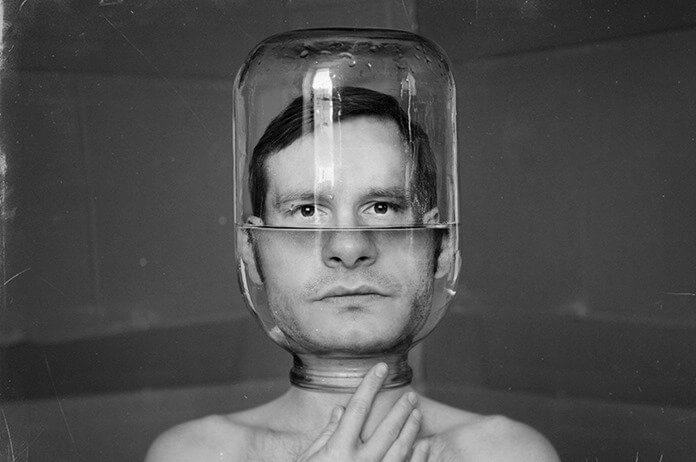 One of the most dangerous methods of treatment was used not so long ago - at the beginning of the 20th century. The procedure itself was extremely simple. It was necessary to dip your head into a container of gasoline or kerosene in order to remove intruders from the scalp.
One of the most dangerous methods of treatment was used not so long ago - at the beginning of the 20th century. The procedure itself was extremely simple. It was necessary to dip your head into a container of gasoline or kerosene in order to remove intruders from the scalp.
While the gasoline / kerosene treatment for lice was indeed effective, it could well have been deadly if the patient passed an open fire. Modern medicine can solve this problem much more safely with medicated shampoos.
5. Mercury from syphilis
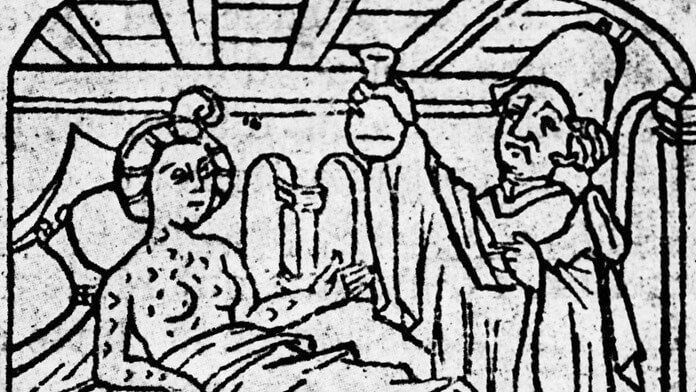 Since the 16th century, mercury in the form of ointments and fumigations has been widely used to treat syphilis. And the worst thing is that such procedures were often repeated until the patient's death. Thus was born a witty about lovers spending "one night with Venus and all their life with Mercury."
Since the 16th century, mercury in the form of ointments and fumigations has been widely used to treat syphilis. And the worst thing is that such procedures were often repeated until the patient's death. Thus was born a witty about lovers spending "one night with Venus and all their life with Mercury."
But what can we say about the backward 16th century, when at the beginning of the 20th century doctors treated syphilis by injecting drugs with mercury into the patient's body!
Fortunately, this terrible method of treatment finally became a thing of the past after the mass production of penicillin in 1943.
4. Carcasses of dead whales for rheumatism
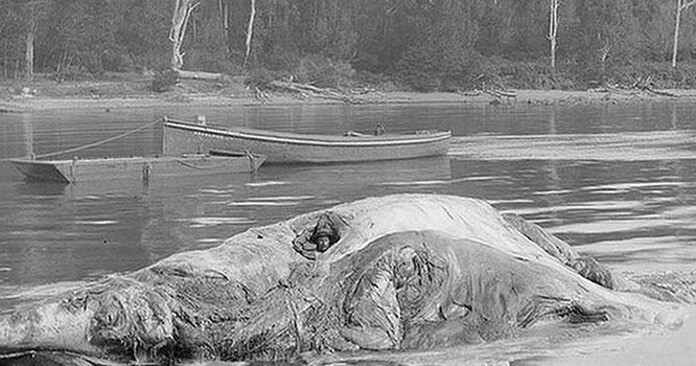 Pain with rheumatism is one of the most severe types of pain known to mankind... It is not surprising that in an attempt to get rid of it, people are willing to do anything. Even spend 30 hours in a decaying whale carcass. This original method of treatment was invented by the inhabitants of the South Coast of Australia, and practiced in the 19th century.
Pain with rheumatism is one of the most severe types of pain known to mankind... It is not surprising that in an attempt to get rid of it, people are willing to do anything. Even spend 30 hours in a decaying whale carcass. This original method of treatment was invented by the inhabitants of the South Coast of Australia, and practiced in the 19th century.
Dying from joint pain or suffocating from the stench is a difficult choice, do you think?
3. Tobacco enema as a salvation for drowning
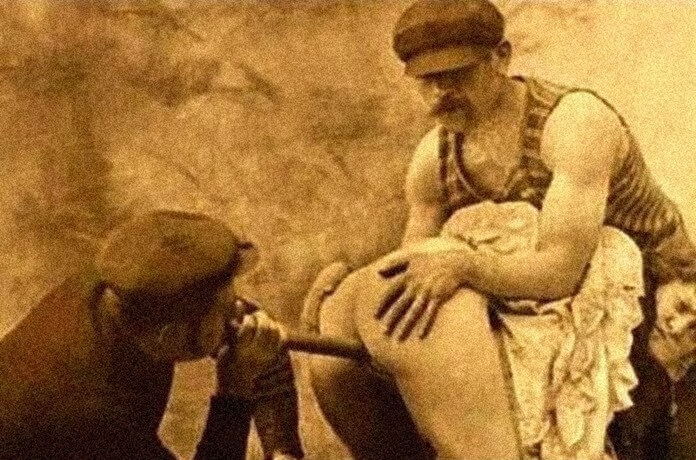
This brutal method of treatment was used in the 19th century, mainly for the resuscitation of drowned people. The idea behind the "saving enema" was that heated tobacco smoke would reach the lungs, remove excess moisture and help restore breathing. And the nicotine in tobacco will make your heart beat fast and hard.
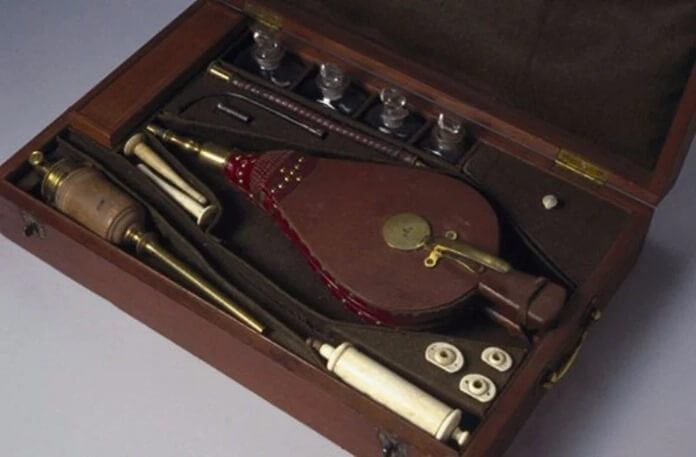 On the London embankments there was even the equipment needed for the tobacco enema, which was kindly provided by the Royal Humane Society to the townspeople. Master classes were also held with the involvement of living townspeople and townspeople.
On the London embankments there was even the equipment needed for the tobacco enema, which was kindly provided by the Royal Humane Society to the townspeople. Master classes were also held with the involvement of living townspeople and townspeople.
2. Severe starvation from aortic aneurysm
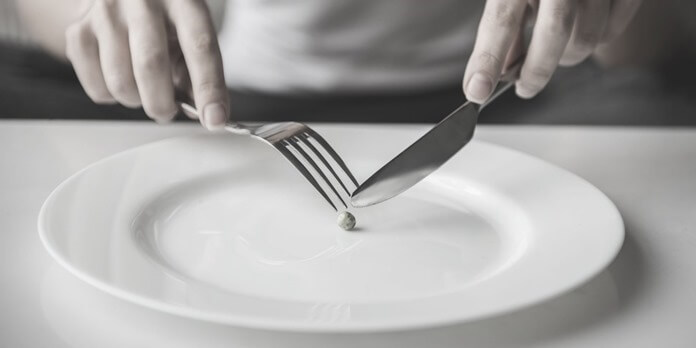 In the early 20th century, doctors tried to treat aortic aneurysm by reducing the force with which the heart pumped blood. One of the dubious schemes used to achieve this was known as the Tuffnell Diet.
In the early 20th century, doctors tried to treat aortic aneurysm by reducing the force with which the heart pumped blood. One of the dubious schemes used to achieve this was known as the Tuffnell Diet.
Its description can be found in medical texts from 1901:
- two ounces of bread and butter and two ounces of milk for breakfast,
- three ounces of meat and four ounces of milk or red wine for lunch,
- two ounces of bread with two ounces of milk for dinner.
An ounce is 28.3 grams. We do not know whether this method of treatment helped many, but the fact that after it was brutally hungry is undoubtedly.
1. Parts of corpses as a cure for epilepsy and other diseases
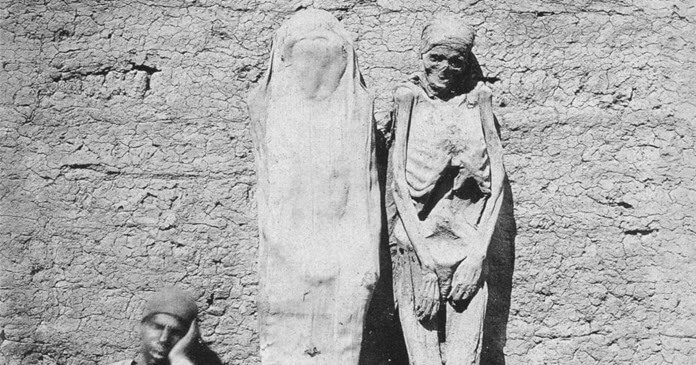 The phrase “you are what you eat” can sound rather ominous when you remember that for hundreds of years, up to the 1890s, human corpses served as an ingredient in various medicines. Perhaps the use of these drugs was not the most dangerous method of treating various diseases, but it was certainly the most vile.
The phrase “you are what you eat” can sound rather ominous when you remember that for hundreds of years, up to the 1890s, human corpses served as an ingredient in various medicines. Perhaps the use of these drugs was not the most dangerous method of treating various diseases, but it was certainly the most vile.
The most common components of cadaveric drugs were blood, fat, bone, and flesh. Many executioners received orders for body parts of a criminal sentenced to death. And in 1664, the book "The Complete Book of Chemistry" was even published, which described in detail which corpse is better to use for the preparation of a health remedy, and what to do with it.
One of the most popular medicines of the time was made from smuggled Egyptian mummies. Powdered mummified remains were used to treat epileptic seizures, bruising and hemorrhage.

